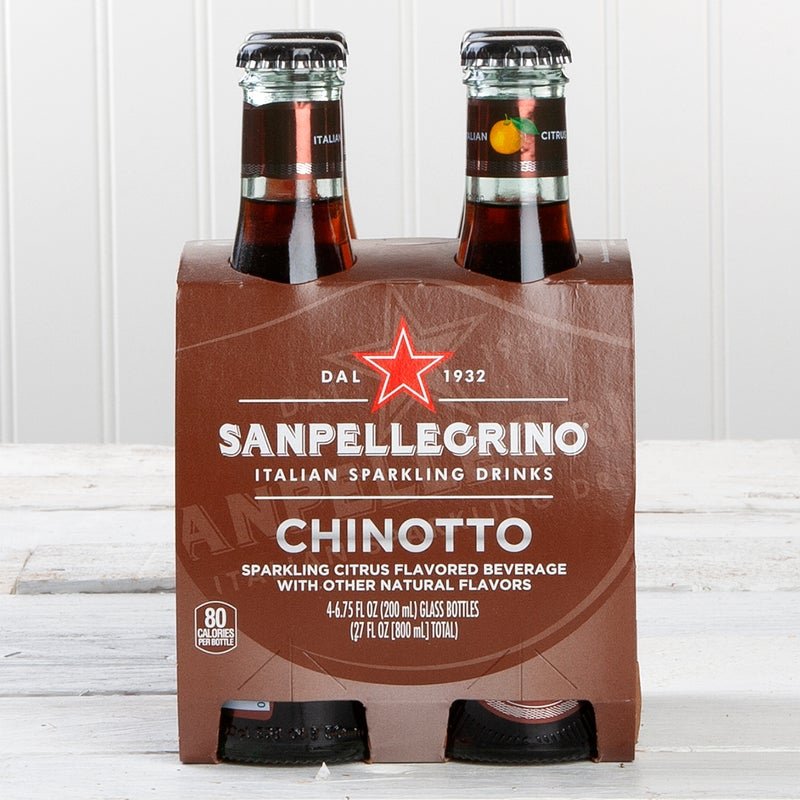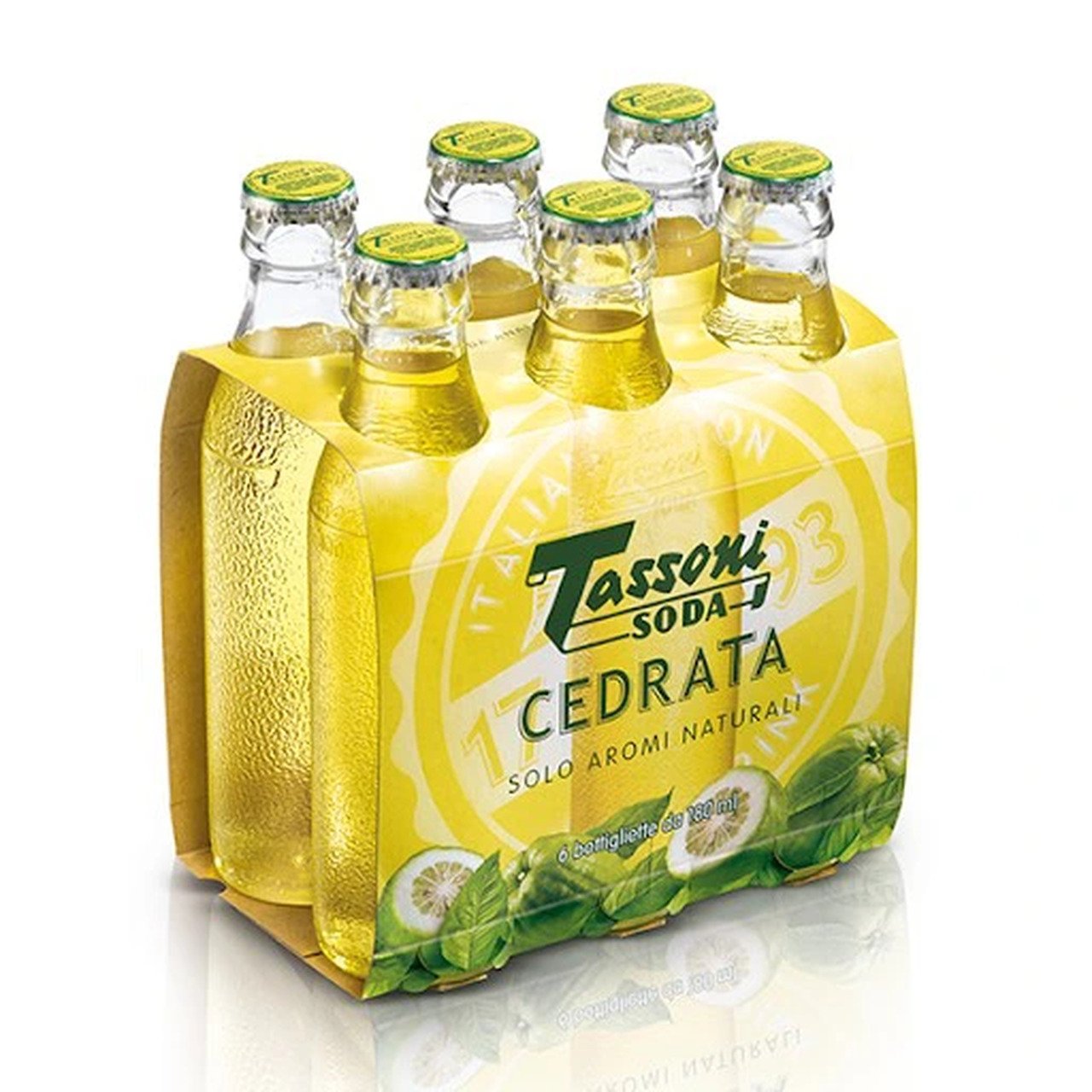Image credit: Crodino.
You think Italy, you think aperitivo and very quickly thoughts turn to boozy brews enjoyed on a rooftop terrace or a rowdy bar filled with plenty of locals. But the country that penned such classics as the Spritz and Negroni is also known for its fair share of non alcoholic apertifs or aperitivi analcolici.
Free of booze, these drinks are made from ingredients like bitter citrus and herbs that stimulate the appetite. They’re an acquired taste at first, but once you’ve had a sip, you’ll never reach for a Coke again.
So as we raise a glass to 2022, here are seven of our favorite Italian aperitivo sodas sans alcohol for all those intrepid travellers who want to experience the local bar culture without the hangover.
On that note, while these drinks are ubiquitous in Italian supermarkets and on the menu at most bars, they’re rarer at restaurants and dinner joints, where you might be forced to choose between wine and, well, your run of the mill sodas.
Image credit: San Pellegrino.
Chinotto
Italy’s national soda is not for everyone. I have many childhood memories of reaching blindly into my nonna’s fridge for what I thought was Coke only to find myself spitting out a mouthful of this bitter brown soda in surprise.
Decades on, I have acquired a taste for what is a surprisingly complex and flavorful drink traditionally associated with the south - my nonna’s birthplace. But like many things in Southern Italy, the ping-pong ball-sized citrus fruit from which the drink is made is an imported delicacy - brought to the coast by a Ligurian sailor in the 1500s from China (hence the name Chinotto).
Extracts of the zesty sun-ripened oranges are blended with orange blossom flowers, cinnamon, rhubarb and a secret, and often proprietary, mix of herbs to make Chinotto today. The flavor is, in one word, bitter, but also aromatic, perfect alongside fried fish or puntarelle (a bitter Italian vegetable) and anchovies.
Image credit: Tassone Cedrata.
Cedrata
Cedrata traces its roots back to one brand - Tassoni. Nicola Tassoni to be precise - a Maquis who in 1868 bought a pharmacy in the historic center of Salò, Brescia, only to later sell it (and the recipe for Cedrata) to Paolo Amadei, the creator of the initial Tassoni distillery in 1884.
Like most Italian aperitivos, this drink has a sweet and sour flavour and a distinctive citrus aroma - in this case, cedro - a large citrus fruit with a thick pith that is used widely in Southern Italy in desserts and cakes. Less bitter than chinotto, cedrata is bright and refreshing with a hint of sugar sweetness. It’s served in a tall tumbler glass full of ice often garnished with a slice of lemon and some basil or lemon verbena leaves.
Image credit: Crodino.
Crodino
Crodino is better known in our house as spritz without the booze. Radioactive in its orange hue, it comes from Crodo - a town in Piedmont, where it is still bottled today. It traces its roots back to 1965 and is made from an infusion of spices, woods, roots and herbs that include nutmeg, cloves and coriander, all of which is left to infuse for six months. On the nose, it’s zesty and citrus, while on the palate, it’s dominated by orange and grapefruit with quinine herbal rooty bitterness, vanilla and light citric acidity.
Crodino, which is now owned by the Campari group, suggests serving in a wine goblet with generous ice and an orange slice, and pairing with finger food like tapas, cheese and cold cuts.
Image credit: Spuma Polara.
Spuma
Spuma is the Italian version of cola made with sparkling water, sugar, caramel and other flavorings. In the early ‘20s, you could only get it ‘blonde’ or flavored with rhubarb, oranges and vanilla for a drink that was made to be served over ice and lemon. In 1938, the Spumador company created the very first “black” version, which amped up the bitterness with the addition of herbs and an infusion of chinotto (the myrtle-leaf orange that is ubiquitous in Italian aperitivi).
These days spuma is available in a variety of other flavors that include mint and elderflower. Often lemon juice and sugar syrup are added to make a mocktail that’s popular throughout the summer months.
Image credit: Fabri 1905.
Orzata
The only non sparkling aperitivo on our list is named after the Latin word hordeata, which means “made with barley”. Orzata is a sweet syrup made from barley, seeds, nuts, roots or other vegetables, and flavoured with benzoin resin extract, which gives it a bitter almond flavour.
It’s another popular summer drink, served over crushed ice with vanilla or orange blossom essence added for sweetness. If you’ve ever had a Mai Tai or Tiki drink, you’ll be familiar with this milky syrup.
Image credit: Lurisia Gazzosa.
Gazzosa
Sugary and bubbly, gazzosa is Italy’s answer to lemonade. In the old days, it was made artisanally, letting the water, sugar and lemon ferment in the sun for a simple drink that was often used to dilute wine or beer.
These days, the best gazzosa is made from tart and sweet Sfusato lemons from the Amalfi coast and mineral water from Lurisia in the Italian Alps. Intensely citrusy, it pairs well with seafood dishes and can be made into a tart, tasty sorbet. In some bars, mint or licorice is added to the glass before sipping.
Image credit: Gingerino Recoaro.
Gingerino
Gingerino is one of the harder to find aperitivos on this list. It made a name for itself in the ‘70s with television adverts that professed: “Eating is not a problem if there is an appetite. And appetite is prepared thanks to Recoaro gingerino! The famous, delicious alcohol-free aperitif”.
Native to Venice and more specifically Triveneto - the three Italian regions of Venezia Euganea, Venezia Giulia and Venezia Tridentina - this neon orange soda was named after the English word for ginger. In fact, its unique, bitter and slightly sparkling taste is similar to ginger beer, but with stronger citrus notes. You can still pick up a bottle at bars and restaurants in the north east.














